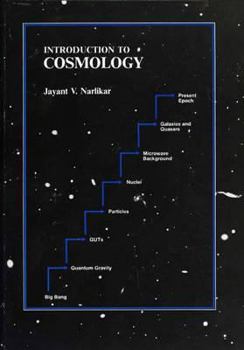Introduction to Cosmology
Select Format
Select Condition 
Book Overview
The third edition of this successful textbook is fully updated and includes important recent developments in cosmology. It begins with an introduction to cosmology and general relativity, and goes on... This description may be from another edition of this product.
Format:Hardcover
Language:English
ISBN:0867200154
ISBN13:9780867200157
Release Date:January 1983
Publisher:Jones & Bartlett Publishers
Length:470 Pages
Weight:2.10 lbs.
Customer Reviews
1 rating
Be prepared to think...
Published by Thriftbooks.com User , 20 years ago
Jayant Narlikar's `Introduction to Cosmology' has a simple enough title, but do not be deceived. This is a graduate-level textbook on one of the most difficult subjects around--mathematical, theoretical explorations of large-scale universal structures.If, as Stephen Hawking once said, for every equation in the book, you lose half your readership, I would calculate (just off the top of my head) that only a dozen people have read this book! Actually, to be serious, this book presupposes a knowledge of calculus (differential equations, vector analysis, Fourier series, etc.) and assumes a fairly extensive knowledge of physics (thermodynamics, electromagnetic theory, atomic structure, fluid dynamics). This is intended as a text book for the advanced undergraduate or graduate level student, and to that end, it has problems, most of which are computational in nature. `It is usual to find cosmology appearing at the end of a text on general relativity, introduced more as an appendage than as a subject in its own right. Perhaps this is one reason why cosmology still stands apart from the rest of astronomy, where it really belongs. The astronomer tends to regard cosmology as a playground for general relativists rather than a logical extension of extragalactic astronomy.'Narlikar introduces general relativistic theory as a tool rather than a subject, for use in understanding the geometrical principles applied to cosmology. He continues forward to use standard models (Friedmann) of cosmology as solutions to Einstein's equations, before progressing to discussing the physical properties of cosmology, including galactic evolution (structure, kinematics and dynamics--one could refer here then to Milhaus and Binney's work on the same), particle physics and early universe issues. From here, Narlikar progresses to some non-standard cosmological constructions, including anisotropic cosmologies, steady state theories and cosmologies that might correspond to the Mach principle (although, as the name non-standard would indicate, these are fringe, or sometimes, older theories, which are largely discredited, but science must look to them as they occasionally give insight into observations). This, as an introduction, is not exhaustive, and does not get into cosmological models such as Alfven & Klein's matter-antimatter symmetry, the Einstein-Cartan cosmologies, or Milne's kinematic relativity, or the ideas of Segal or McCrea.From here Narlikar ends the book with discussion of observational cosmology, exploring the implications of local observations (such as background microwave radiation that permeates the universe, a discovery of Penzias and Wilson at Bell Telephone Laboratories), the Hubble Constant and redshift issues, and quasars (do they or do they not fit standard models of cosmology and scientific principles currently known?).`By claiming to describe the universe as a whole, cosmology transcends the realms of all other branches of science. Any conclusions about th




